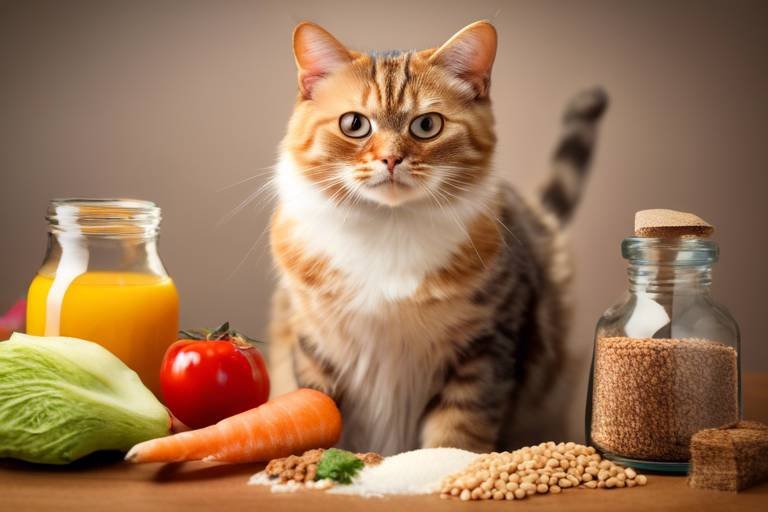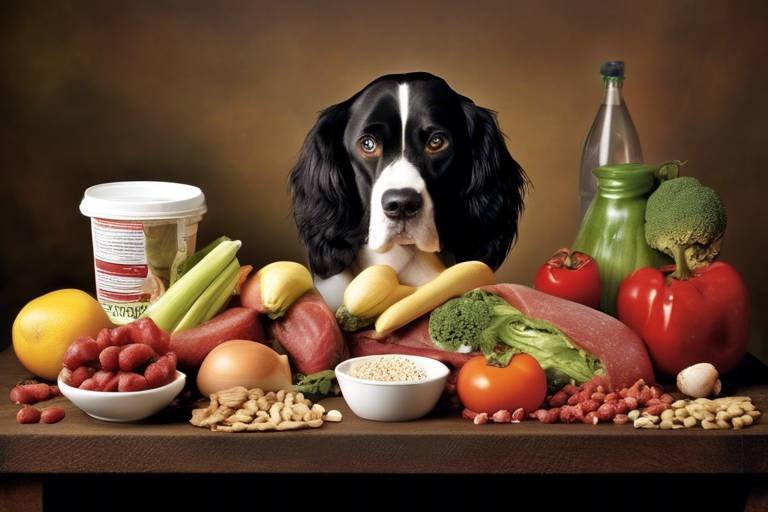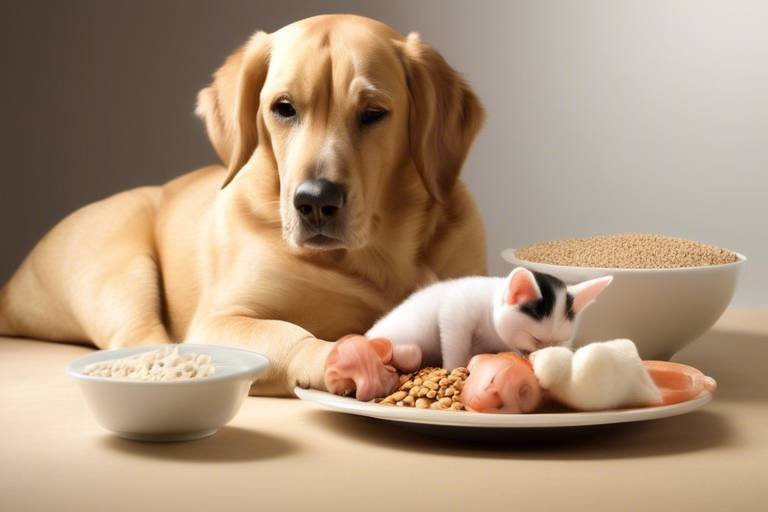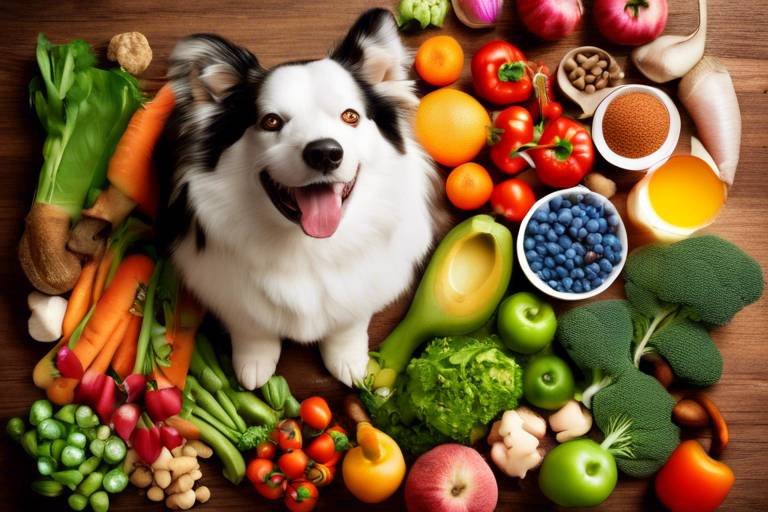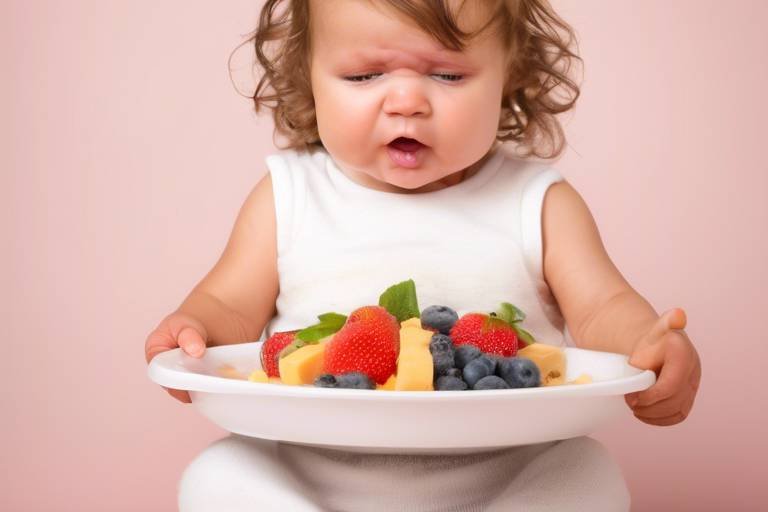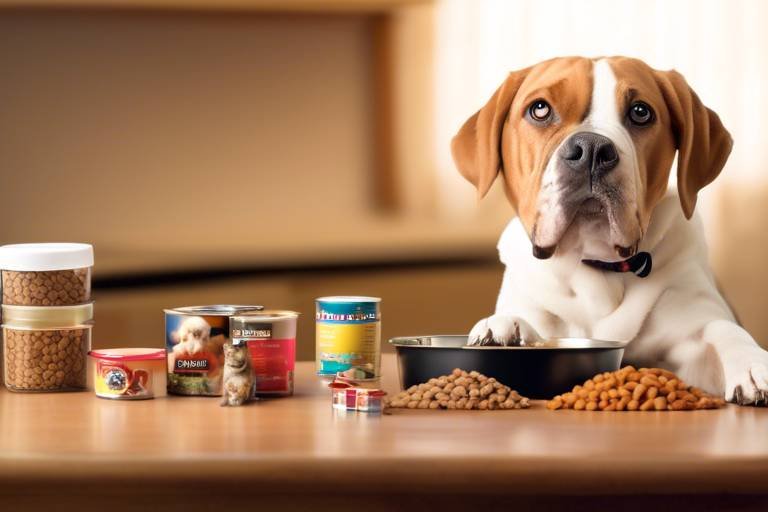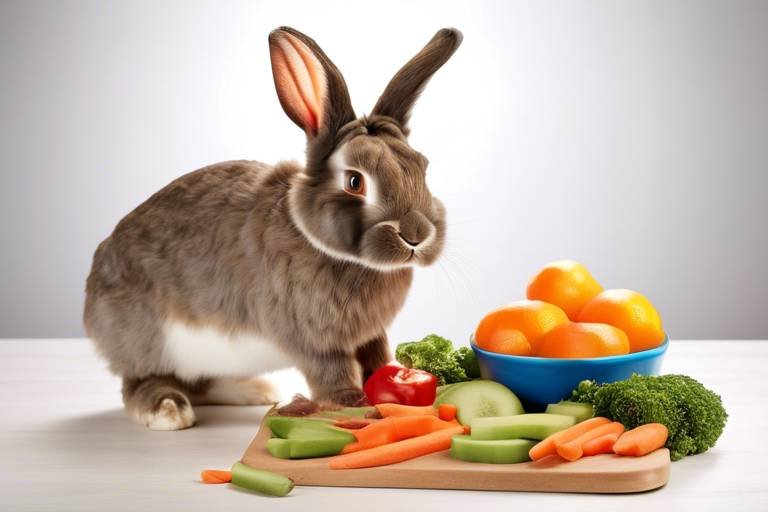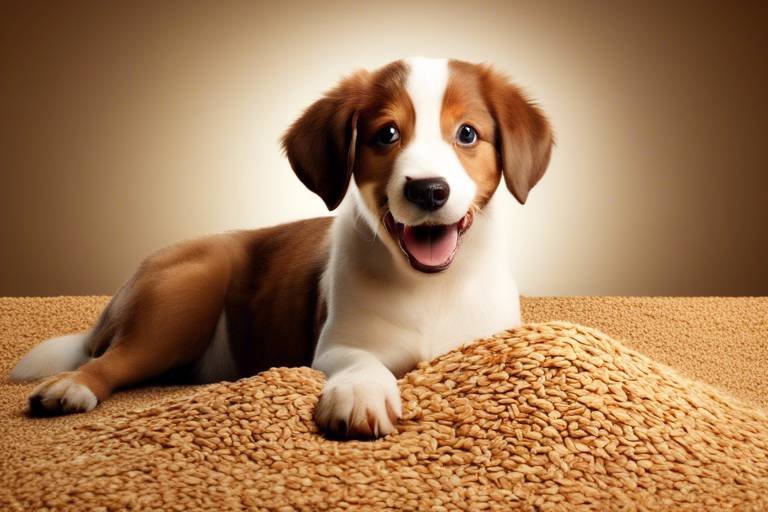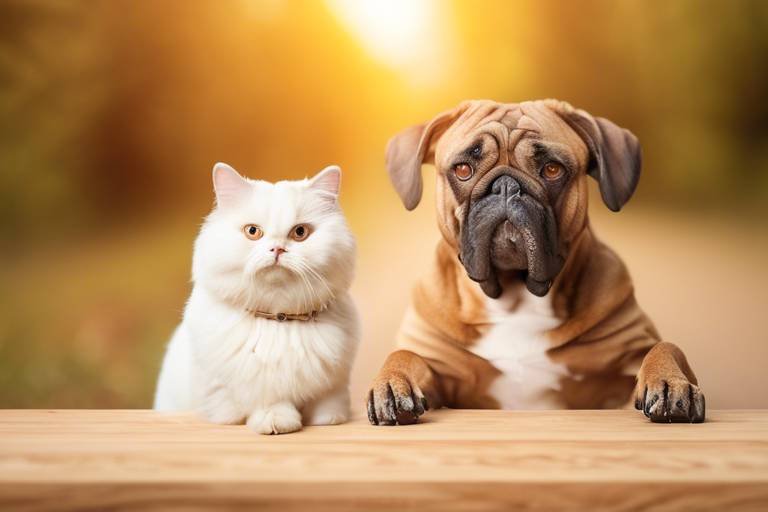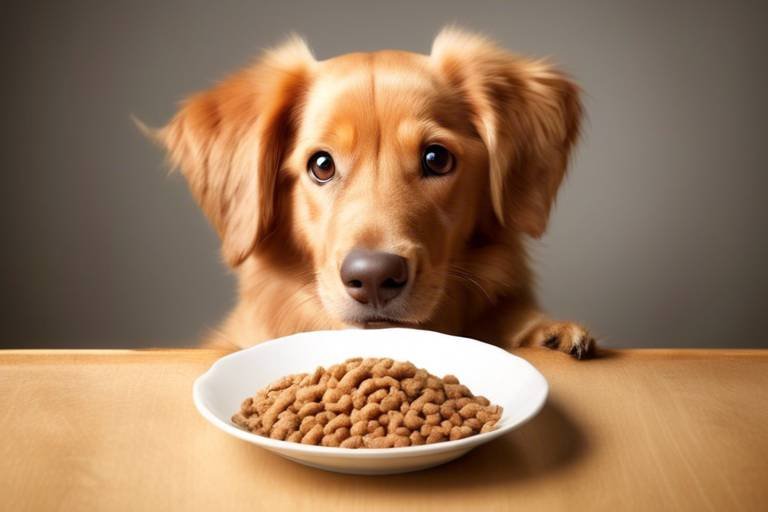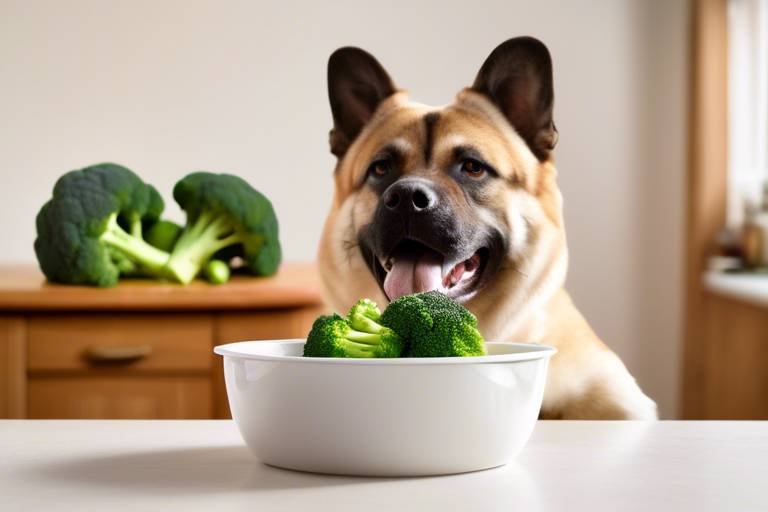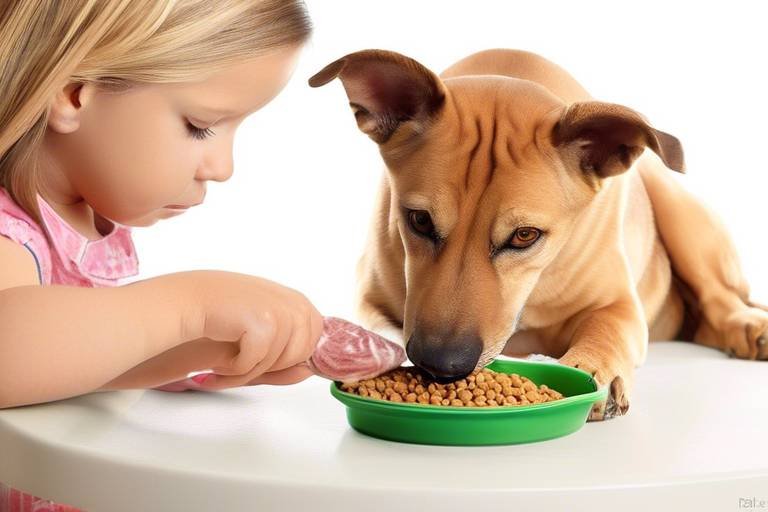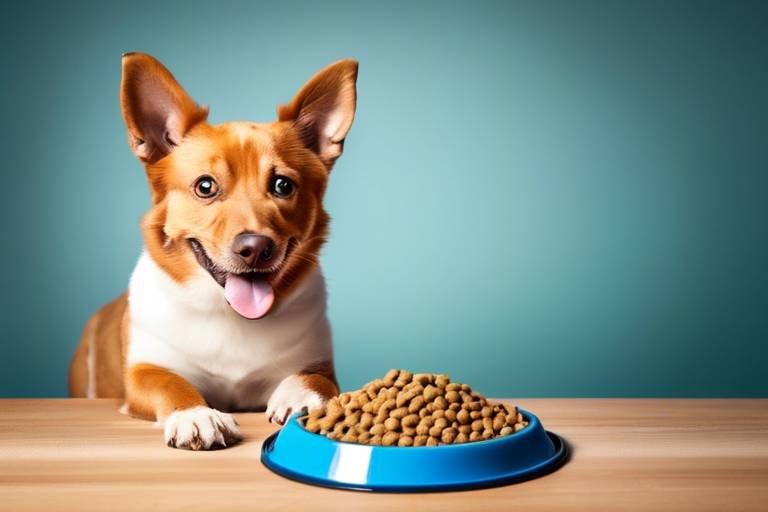Understanding the Nutritional Needs of Cats
When it comes to our feline friends, understanding their nutritional needs is not just important—it's essential! Cats are unique creatures with specific dietary requirements that differ significantly from those of dogs and humans. Just like you wouldn’t feed a toddler the same food as an adult, you can’t expect your cat to thrive on a one-size-fits-all diet. This article explores the essential dietary requirements for cats, including their unique nutritional needs, types of food, and how to ensure a balanced diet for optimal health and well-being.
A balanced diet is crucial for a cat's overall health. It helps maintain their weight, supports their immune system, and promotes healthy skin and fur, ensuring they lead a long, active life. Think of it this way: just like a car needs the right fuel to run smoothly, your cat needs the right nutrients to function at its best. Without a proper diet, your cat may face a myriad of health issues, including obesity, diabetes, and even kidney problems. So, what does a balanced diet look like for a cat? It’s a mix of proteins, fats, vitamins, and minerals that work together to keep your furry companion happy and healthy.
Cats require specific nutrients to thrive. Unlike humans, who can derive energy from carbohydrates, cats are obligate carnivores, meaning they need a diet high in animal proteins. This section discusses the vital components, including proteins, fats, vitamins, and minerals, and their roles in maintaining a cat's health and energy levels. Let’s break down these essential nutrients:
- Proteins: The building blocks of life, crucial for muscle development and energy.
- Fats: A vital energy source that aids in nutrient absorption.
- Vitamins: Essential for various bodily functions, including vision and immune response.
- Minerals: Important for bone health and metabolic processes.
Protein is essential for cats, providing the necessary amino acids for muscle development and energy. Just like how a bodybuilder needs protein to build muscle, your cat relies on it to maintain a healthy body. The best protein sources for cats include:
- Chicken
- Turkey
- Fish
- Lamb
These animal-based proteins not only provide high-quality nutrition but also keep your cat's coat shiny and skin healthy. Remember, the higher the protein content in your cat's food, the better!
Understanding the differences between animal and plant proteins is vital. While cats can digest some plant proteins, they don’t provide the complete amino acid profile that animal proteins do. For instance, plant proteins often lack taurine, an essential amino acid that cats must get from their diet. This part examines why animal proteins are generally more beneficial for cats compared to plant-based options. Think of animal proteins as the VIP guests at a party—your cat's body knows exactly how to utilize them!
Cats have varying protein needs throughout their life stages. Kittens require more protein for growth, while adult cats need a steady amount to maintain their health. Senior cats may also need higher protein levels to prevent muscle loss. Here’s a quick overview:
| Life Stage | Protein Requirement |
|---|---|
| Kittens | 30-40% of diet |
| Adults | 25-30% of diet |
| Seniors | 30-35% of diet |
By tailoring your cat's diet according to their life stage, you can help them thrive and maintain a healthy lifestyle.
Fats are crucial for energy and nutrient absorption in cats. While some pet owners might shy away from fats, they are an essential part of your cat's diet. Fats provide energy and help in the absorption of fat-soluble vitamins. This section covers the types of fats needed and their role in a cat's diet, including omega-3 and omega-6 fatty acids. Think of fats as the fuel that keeps your cat's engine running smoothly!
Selecting the right cat food can be overwhelming. With so many options on the market, how do you know what’s best for your furry friend? This section provides guidance on reading labels, understanding ingredients, and choosing high-quality food tailored to your cat's specific needs. Look for brands that list animal proteins as the first ingredient and avoid foods that are heavy on fillers like corn and soy.
Both wet and dry food have their advantages. Wet food can provide additional moisture to your cat's diet, which is especially important for urinary health. On the other hand, dry food is more convenient and can help keep your cat's teeth clean. This part compares the benefits and drawbacks of each type, helping cat owners make informed choices for their pets. Ultimately, a mix of both might be the best approach!
Deciding between homemade and commercial diets can be challenging. Homemade diets allow you to control every ingredient but require careful planning to ensure nutritional completeness. Commercial diets, on the other hand, are formulated to meet all of your cat's dietary needs. This section outlines the pros and cons of each option, including nutritional completeness and convenience for pet owners. Whichever route you choose, make sure it meets your cat's unique needs!
1. Can cats be vegetarians?
No, cats are obligate carnivores, which means they need animal-based proteins to thrive.
2. How much protein does my cat need?
It varies by age; kittens require about 30-40%, while adults need 25-30% of their diet to be protein.
3. Is wet food better than dry food?
Both have their benefits; wet food provides hydration, while dry food is convenient and can help dental health.
4. Can I feed my cat homemade food?
Yes, but ensure it’s nutritionally balanced and meets all your cat's dietary needs.
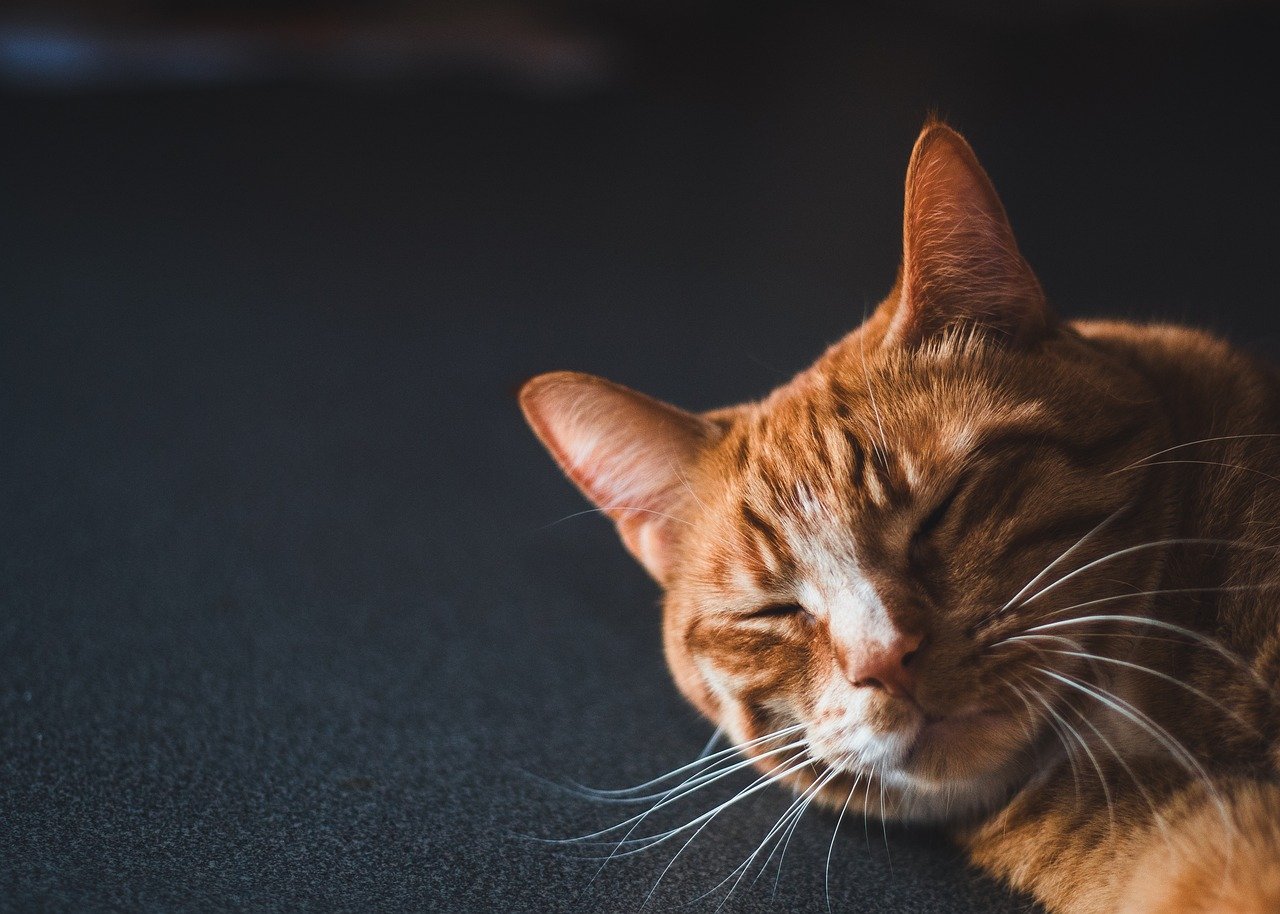
The Importance of a Balanced Diet
A balanced diet is not just a buzzword; it’s the cornerstone of a cat's health and well-being. Think of it as the foundation of a house; without it, everything else becomes unstable. Just like us, cats need a variety of nutrients to thrive, and a well-rounded diet can significantly impact their quality of life. A balanced diet helps maintain their weight, supports their immune system, and promotes healthy skin and fur. It’s essential for ensuring they lead a long, active life filled with playful moments and snuggles.
Imagine your cat as a tiny athlete. Just like an athlete needs the right fuel to perform at their best, your feline friend requires a specific mix of nutrients to stay in top shape. The right balance of proteins, fats, vitamins, and minerals can mean the difference between a cat that’s full of energy and one that’s lethargic. When we talk about a balanced diet, we’re looking at the big picture—ensuring that every meal contributes to their overall health.
Moreover, a balanced diet is crucial in preventing various health issues. For example, obesity is a growing concern among cats, and a proper diet can help manage their weight effectively. A well-nourished cat is less likely to suffer from diseases such as diabetes, kidney issues, and dental problems. It’s like giving them a shield against health threats! In addition, the right nutrients can enhance their coat's shine and texture, making them not just healthier but also more beautiful.
One of the best ways to ensure your cat is getting a balanced diet is by understanding their specific needs. For instance, kittens require different nutrients than adult cats or seniors. Their nutritional requirements change as they age, and it’s essential to adapt their diet accordingly. This means paying attention to the life stage of your cat and adjusting their food choices to meet their evolving needs.
So, how do you know if your cat is getting a balanced diet? Look for high-quality cat food that lists animal protein as the first ingredient. Check for essential fatty acids and a variety of vitamins and minerals. Also, consider consulting your veterinarian for personalized dietary recommendations. After all, they know your cat's health history and can guide you in making the best choices. Remember, a healthy cat is a happy cat, and it all starts with a balanced diet!
- What makes a diet balanced for cats? A balanced diet for cats includes the right proportions of proteins, fats, vitamins, and minerals tailored to their specific life stage.
- Can I feed my cat homemade food? Yes, but it’s crucial to ensure it meets all their nutritional needs. Consulting with a veterinarian is recommended.
- How often should I feed my cat? Most adult cats do well with two meals a day, but kittens may require more frequent feeding.
- What are the signs of an unbalanced diet? Signs may include weight gain, lethargy, poor coat condition, and digestive issues.

Essential Nutrients for Cats
When it comes to our furry friends, understanding their nutritional needs is paramount. Cats are obligate carnivores, which means their bodies are designed to thrive on a diet primarily composed of animal-based nutrients. This unique requirement sets them apart from other pets, like dogs, who can adapt to a more omnivorous diet. To keep your kitty healthy and happy, it's essential to provide a balanced mix of nutrients tailored to their specific needs. Let’s dive into the vital components that contribute to a cat's well-being!
First and foremost, proteins play a crucial role in a cat’s diet. They are the building blocks of life, providing essential amino acids necessary for muscle development and overall energy. Cats require a higher percentage of protein in their diet compared to many other animals, with estimates suggesting around 30-40% of their caloric intake should come from protein sources. The best protein sources for cats include meat, fish, and poultry, which not only provide the necessary amino acids but also contribute to their overall vitality.
Next up, we have fats. While some may think of fats as unhealthy, they are actually vital for a cat's energy levels and nutrient absorption. Cats need fats to help absorb fat-soluble vitamins like A, D, E, and K. Additionally, certain fatty acids, such as omega-3 and omega-6, are essential for maintaining a healthy coat and skin. These fats can be found in fish oil and certain plant oils, and they help support cognitive function and reduce inflammation.
Vitamins and minerals are also critical components of a cat's diet. Vitamins such as A, B-complex, D, E, and K play various roles in metabolic processes, while minerals like calcium, phosphorus, and potassium are necessary for bone health and muscle function. It's important to note that cats cannot synthesize certain vitamins on their own, which means they must obtain them through their diet. A well-balanced commercial cat food usually contains the right mix of these essential nutrients, but it’s always good to check the label!
To summarize, here’s a quick look at the essential nutrients every cat needs:
- Proteins: For muscle development and energy.
- Fats: For energy and nutrient absorption.
- Vitamins: For metabolic processes and overall health.
- Minerals: For bone health and muscle function.
In conclusion, ensuring your cat receives a well-rounded diet rich in these essential nutrients is key to maintaining their health and vitality. A little knowledge goes a long way in making informed decisions about your cat's diet, so keep these vital components in mind when selecting their food. Remember, a happy cat is a healthy cat!
Protein: The Building Block
When it comes to our feline friends, protein is not just a dietary component; it’s the very foundation of their health. Cats are obligate carnivores, which means their bodies are designed to thrive on a diet rich in animal proteins. This crucial nutrient provides the essential amino acids that cats cannot synthesize on their own. Think of protein as the building blocks that help maintain and repair their muscles, tissues, and organs. Without adequate protein, your cat could face serious health issues, including muscle wasting and a weakened immune system.
So, what are the best sources of protein for your cat? Generally, animal-based proteins such as chicken, turkey, beef, and fish are excellent choices. These sources not only provide high-quality protein but also come packed with other vital nutrients. For instance, fish is rich in omega-3 fatty acids, which contribute to a shiny coat and healthy skin. On the other hand, while plant proteins can be found in some commercial cat foods, they often lack the complete amino acid profile that animal proteins offer. This is why it’s essential to prioritize animal-based proteins when selecting your cat's diet.
Now, let’s break it down further. Cats have different protein needs depending on their life stage. Kittens, for example, require more protein than adult cats because they are growing rapidly. On average, a kitten needs about 30-40% protein in their diet, while adult cats generally require around 25%. Senior cats, on the other hand, may also need higher protein levels to maintain muscle mass as they age. This shift in protein requirements highlights the importance of tailoring your cat’s diet according to their specific life stage.
| Life Stage | Recommended Protein Percentage |
|---|---|
| Kittens | 30-40% |
| Adult Cats | 25% |
| Senior Cats | 30%+ |
In summary, protein plays a vital role in your cat's diet. It supports not only their physical health but also their overall well-being. By choosing high-quality animal protein sources and adjusting the protein levels according to your cat's life stage, you can help ensure they lead a happy, healthy, and active life. Remember, a well-nourished cat is a happy cat!
- How much protein should my cat eat? - It varies by life stage; generally, kittens need 30-40%, while adults require around 25%.
- Can cats get enough protein from plant sources? - Plant proteins often lack essential amino acids, making animal-based proteins the better choice.
- What are some good animal protein sources? - Chicken, turkey, beef, and fish are excellent options for your cat's diet.
Animal vs. Plant Proteins
When it comes to a cat's diet, understanding the difference between animal and plant proteins is crucial for their health. Cats are obligate carnivores, which means their bodies are designed to thrive on a diet primarily composed of animal-based foods. This is largely due to their unique digestive systems and the specific nutrients they require to maintain optimal health. Animal proteins provide essential amino acids, such as taurine, which are vital for heart function, vision, and reproduction. In contrast, while plant proteins can offer some nutritional benefits, they often lack the complete amino acid profile that cats need.
Animal proteins, like those found in chicken, fish, and beef, are not only more digestible for cats but also provide higher levels of necessary nutrients. For instance, a diet rich in animal protein can support strong muscle development and energy levels, allowing your feline friend to be active and playful. On the other hand, plant proteins, such as those derived from soy or corn, may contain lower biological value and are often harder for cats to digest. This means that while they can serve as supplementary protein sources, they shouldn't make up the bulk of your cat's diet.
Moreover, the quality of the protein source matters significantly. High-quality animal proteins come from well-raised animals and are less likely to contain harmful additives or fillers. Here’s a quick comparison to illustrate the differences:
| Type of Protein | Source | Amino Acid Profile | Digestibility |
|---|---|---|---|
| Animal Protein | Chicken, Fish, Beef | Complete | High |
| Plant Protein | Soy, Corn, Peas | Incomplete | Moderate to Low |
It’s important to note that while some cat foods may include plant proteins, these should be seen as supplements rather than the main component of your cat's diet. Too much reliance on plant-based proteins can lead to nutritional deficiencies, which may manifest in various health issues, including poor coat condition, lethargy, and even more serious health concerns over time.
In conclusion, when choosing cat food, prioritize those that list high-quality animal proteins as the primary ingredient. This will ensure your cat receives the necessary nutrients to thrive and live a vibrant, healthy life. Remember, a happy cat is a well-fed cat, and understanding the significance of protein sources is a fundamental step in achieving that.
Protein Requirements by Age
When it comes to our furry friends, understanding their protein requirements at different life stages is crucial for ensuring they lead healthy, vibrant lives. Just like humans, cats have varying nutritional needs as they grow from playful kittens to wise seniors. Let's break it down!
For kittens, protein is like the magic fuel that powers their rapid growth and development. These little furballs are full of energy and need a diet that’s rich in high-quality protein to support their muscle development and overall health. A kitten's diet should ideally contain around 30-40% protein to fuel their playful antics and support their growing bodies. Sources like chicken, turkey, and fish are fantastic options, as they provide the essential amino acids that kittens need.
As cats transition into their adult years, their protein needs shift a bit. While they still require a significant amount of protein, the percentage can decrease slightly to around 25-30%. Adult cats are typically less active than their kitten counterparts, but they still need a balanced diet to maintain their muscle mass and overall health. It's important to choose high-quality cat food that lists real meat as the first ingredient to ensure they're getting the protein they need.
Now, let’s not forget about our beloved senior cats. As cats age, their metabolism slows down, and they may become less active. However, their protein needs can actually increase to about 30-35%. Older cats often experience muscle loss, and a higher protein diet can help combat this. Additionally, senior cats may benefit from easily digestible protein sources, which can be found in specially formulated senior cat foods.
| Life Stage | Protein Requirement | Recommended Sources |
|---|---|---|
| Kittens | 30-40% | Chicken, Turkey, Fish |
| Adults | 25-30% | Real Meat (Chicken, Beef, Salmon) |
| Senior Cats | 30-35% | Easily Digestible Proteins |
In summary, recognizing and adapting to your cat's protein needs at each life stage is essential for their health and well-being. Whether you’re nurturing a playful kitten, maintaining an active adult, or caring for a wise senior, providing the right amount of protein can make all the difference. So, the next time you’re shopping for cat food, remember that what’s inside the bag is just as important as the cute packaging!
- How much protein does my cat need? - The protein requirement varies by age; kittens need 30-40%, adults require 25-30%, and seniors should have around 30-35% protein in their diet.
- Can I feed my cat plant-based proteins? - While cats can digest some plant-based proteins, they thrive best on animal proteins due to their unique nutritional needs.
- What are the best sources of protein for cats? - High-quality animal proteins such as chicken, turkey, and fish are ideal for meeting your cat's protein needs.
Fats: A Vital Energy Source
When it comes to our feline friends, fats play a crucial role in their diet, acting as a primary source of energy and aiding in the absorption of essential nutrients. Just like humans, cats need fats to fuel their daily activities, from chasing after that elusive toy mouse to lounging in the sun. But not all fats are created equal! It's important to understand the different types of fats and how they contribute to your cat's overall health.
Fats are not just a source of energy; they also help in the absorption of fat-soluble vitamins such as A, D, E, and K. Imagine trying to enjoy a delicious salad without dressing—those vitamins would just sit there, unabsorbed and unutilized! Similarly, your cat needs fats to ensure these important vitamins do their job effectively. But which fats should you be looking for in your cat's food?
There are two main categories of fats that are essential for cats:
- Saturated Fats: These fats are typically found in animal products and are solid at room temperature. While they can provide energy, too much saturated fat can lead to health issues.
- Unsaturated Fats: These are liquid at room temperature and are often derived from plants and fish. Unsaturated fats, especially omega-3 and omega-6 fatty acids, are vital for maintaining a healthy coat, skin, and overall well-being.
Among the unsaturated fats, omega-3 and omega-6 fatty acids stand out. Omega-3 fatty acids, found in fish oil and flaxseed, are known for their anti-inflammatory properties and play a significant role in brain and eye development. On the other hand, omega-6 fatty acids, which can be found in chicken fat and corn oil, are essential for maintaining skin health and promoting a shiny coat. It's a delicate balance, though; too much omega-6 can lead to inflammation, so it’s essential to ensure your cat gets the right proportions.
To help you understand the importance of fats in your cat's diet, here’s a quick comparison of the two types of fatty acids:
| Type of Fatty Acid | Sources | Benefits |
|---|---|---|
| Omega-3 | Fish oil, flaxseed | Reduces inflammation, supports brain and eye health |
| Omega-6 | Chicken fat, corn oil | Promotes healthy skin and coat |
When selecting cat food, be on the lookout for these essential fatty acids in the ingredient list. A good balance of fats is vital for your cat's energy levels and overall health. Remember, a healthy cat is a happy cat! So, next time you’re at the pet store, take a moment to read the labels and ensure that your feline companion is getting the right type and amount of fats in their diet.

Choosing the Right Cat Food
Choosing the right cat food can feel like navigating a maze, especially with the overwhelming number of options available today. It’s not just about picking a pretty package or a catchy brand name; it’s about understanding your cat’s unique needs and ensuring you're providing them with the best possible nutrition. To make informed decisions, you need to become a savvy label reader. Start by looking for high-quality ingredients that offer real benefits to your feline friend.
When examining cat food labels, pay close attention to the first few ingredients listed. Ideally, the first ingredient should be a source of animal protein, such as chicken, turkey, or fish. Cats are obligate carnivores, which means they thrive on a diet rich in meat. Ingredients like corn, wheat, and soy should be viewed with skepticism, as these are often used as fillers and do not provide the essential nutrients your cat needs.
Another crucial component to consider is the food's nutritional adequacy statement. This statement, typically found on the packaging, indicates whether the food meets the standards set by the Association of American Feed Control Officials (AAFCO). AAFCO guidelines ensure that the food is complete and balanced for your cat's life stage, whether they are a playful kitten, a healthy adult, or a wise senior.
In addition to understanding labels, consider your cat's lifestyle and health. For example, if your cat is more sedentary, they may require a lower-calorie food to maintain a healthy weight. Conversely, active cats may benefit from higher protein content to support their energy levels. It's also essential to consult with your veterinarian, especially if your cat has specific health issues or dietary restrictions.
One of the common dilemmas cat owners face is choosing between wet and dry food. Both options have their pros and cons. Wet food is excellent for hydration and usually more palatable for picky eaters, while dry food is often more convenient and can help keep teeth clean. Ultimately, the choice may come down to your cat's preferences and health needs. Some owners opt for a combination of both to provide variety and balance.
Another consideration is whether to feed your cat a homemade diet or stick with commercial options. Homemade diets can be tailored to your cat's specific needs, but they require careful planning to ensure nutritional completeness. On the other hand, commercial diets are formulated to meet AAFCO standards, making them a convenient choice for many pet owners. If you decide to go the homemade route, it’s wise to consult with a veterinarian or a pet nutritionist to create a balanced meal plan.
Ultimately, the right cat food will depend on your cat's individual needs, preferences, and any health considerations. It may take some experimentation to find the perfect fit, but by being informed and attentive, you can ensure your furry friend enjoys a healthy and happy life.
- What should I look for in cat food? Look for high-quality animal protein as the first ingredient, a nutritional adequacy statement, and avoid fillers like corn and soy.
- Is wet food better than dry food? It depends on your cat's preferences and needs. Wet food is great for hydration, while dry food is convenient and helps with dental health.
- Can I feed my cat homemade food? Yes, but ensure it's balanced and meets all nutritional requirements. Consulting a vet is recommended.
Wet vs. Dry Food
When it comes to feeding your feline friend, the debate between wet and dry food often sparks passionate discussions among cat owners. Each type of food has its own set of advantages and disadvantages, which can make the decision feel a bit overwhelming. But don't worry, I'm here to break it down for you!
Let's start with wet food. One of the biggest perks of wet cat food is its high moisture content, which can be a game-changer for cats that don’t drink enough water. Cats are notoriously finicky about hydration, and wet food can help ensure they stay hydrated—think of it as a delicious way to quench their thirst. Additionally, wet food tends to be more palatable for many cats, making it an excellent option for picky eaters. The soft texture is also easier for kittens and senior cats to chew, which is something to consider if your furry companion falls into those categories.
On the flip side, dry food has its own set of benefits. One significant advantage is convenience; dry food is easy to store, measure, and serve. It also tends to be more economical in the long run, as you can buy larger bags without worrying about spoilage. Plus, the crunchiness of dry food can help with dental health by reducing plaque buildup. However, it's essential to note that not all dry foods are created equal, and some may lack the necessary moisture content that cats need.
When weighing your options, consider the following factors:
- Hydration: If your cat is prone to urinary tract issues or doesn't drink enough water, wet food might be the better choice.
- Palatability: If your cat is a picky eater, wet food often wins the taste test.
- Dental Health: Dry food can help with dental hygiene, but it shouldn't be the only means of maintaining your cat's oral health.
- Cost: Dry food is generally more budget-friendly, which can be a crucial factor for many pet owners.
Ultimately, the best approach may be a combination of both wet and dry food. Mixing the two can provide the benefits of hydration from wet food while also offering the convenience and dental advantages of dry food. Just be sure to monitor your cat's overall health and adjust portions accordingly to prevent any unwanted weight gain.
Q: Can I feed my cat only dry food?
A: While dry food can be part of a balanced diet, it's essential to ensure your cat gets enough moisture, either from wet food or additional water sources.
Q: Is wet food better for my cat's health?
A: Wet food can be beneficial for hydration and palatability, but the best choice depends on your cat's individual needs and preferences.
Q: How do I transition my cat from dry food to wet food?
A: Gradually mix wet food with the dry food over a week or so, slowly increasing the wet food ratio to help your cat adjust.
Homemade vs. Commercial Diets
When it comes to feeding our feline friends, the debate between homemade and commercial diets can feel like navigating a maze. On one hand, homemade diets give you complete control over what your cat eats, allowing you to select fresh, high-quality ingredients. This can be particularly appealing for pet owners who are concerned about the additives and preservatives often found in commercial cat food. Imagine whipping up a delicious chicken stew packed with nutrients that you know is safe and wholesome for your kitty! However, preparing homemade meals requires time, effort, and a solid understanding of feline nutrition. It’s not just about throwing together some chicken and rice; cats have specific dietary needs that must be met to ensure their health and longevity.
On the flip side, commercial diets offer convenience and often come with the reassurance of being nutritionally balanced. Most reputable brands invest in research and development to create formulas that cater to the specific needs of cats at different life stages. This means that whether you have a playful kitten or a wise old cat, there’s a product designed just for them. But, how do you choose the right one? It's essential to read the labels carefully, looking for ingredients that are high in quality and free from unnecessary fillers.
To help you weigh the pros and cons, here’s a quick comparison:
| Aspect | Homemade Diets | Commercial Diets |
|---|---|---|
| Control Over Ingredients | High | Variable |
| Nutritional Balance | Requires knowledge | Usually balanced |
| Convenience | Time-consuming | Quick and easy |
| Cost | Can be expensive | Varies widely |
Ultimately, the decision between homemade and commercial diets comes down to your lifestyle, budget, and your cat’s specific health needs. If you choose to go the homemade route, consider consulting with a veterinarian or a pet nutritionist to ensure that your recipes are balanced and meet all of your cat's requirements. On the other hand, if you opt for commercial food, look for brands that prioritize quality and transparency in their ingredients. Remember, your cat's health is worth the extra effort, whether you’re cooking up a storm in the kitchen or choosing the best kibble on the shelf!
- Can I mix homemade and commercial diets? Yes, many cat owners choose to do this. Just ensure that the overall diet remains balanced.
- How can I ensure my homemade cat food is nutritionally complete? Consult with a veterinarian or a pet nutritionist, and consider using supplements as needed.
- Are there any risks associated with homemade diets? Yes, if not properly balanced, homemade diets can lead to nutritional deficiencies.
- What should I look for in commercial cat food? Look for high-quality protein sources, minimal fillers, and specific life-stage formulations.
Frequently Asked Questions
- What are the essential nutrients my cat needs?
Cats require a balanced diet rich in specific nutrients like proteins, fats, vitamins, and minerals. These components play vital roles in maintaining their health, energy levels, and overall well-being. Without these essential nutrients, your cat may face health issues down the line.
- Why is protein so important for cats?
Protein is the building block of a cat's diet, providing the necessary amino acids for muscle development and energy. It’s crucial for their growth, especially in kittens, and helps maintain a healthy weight in adults. Cats thrive on animal-based proteins, which are more beneficial than plant proteins.
- How do I choose the right cat food?
Selecting the right cat food can be a daunting task with so many options available. Look for high-quality ingredients, check the nutritional information on the label, and consider your cat's specific needs based on their age, health, and lifestyle. Don't hesitate to consult your vet for personalized recommendations!
- Is wet food better than dry food for my cat?
Both wet and dry food have their pros and cons. Wet food is great for hydration and often more palatable, while dry food is convenient and can help with dental health. The best choice depends on your cat's preferences and dietary needs, so you might want to offer a mix of both!
- Can I feed my cat homemade food?
Yes, you can prepare homemade meals for your cat, but it's essential to ensure that the diet is nutritionally complete. Homemade diets require careful planning to meet all of your cat's nutritional needs, so consider consulting a vet or a pet nutritionist to create a balanced meal plan.
- How do my cat's nutritional needs change with age?
As cats age, their nutritional requirements evolve. Kittens need more protein and calories for growth, while adult cats require a balanced diet to maintain their weight. Senior cats may need diets lower in calories but higher in fiber to support their health and digestion. Always adjust their diet according to their life stage!

